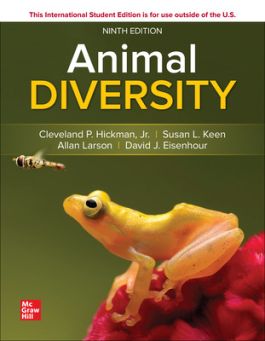ISE Animal Diversity
3. Animal Architecture
4. Taxonomy and Phylogeny of Animals
5. Unicellular Eukaryotes
6. Sponges: Phylum Porifera
7. Cnidarians and Ctenophores
8. Xenacoelomorpha, Platyhelminthes,Gastrotricha, Gnathifera, including Chaetognatha, and Mesozoa,
9. Polyzoa and Trochozoa: Cycliophora, Entoprocta, Ectoprocta, Brachiopoda, Phoronida, and Nemertea,
10. Molluscs
11. Annelids
12. Smaller Ecdysozoans
13. Arthropods
14. Echinoderms and Hemichordates
15. Vertebrate Beginnings: The Chordates
16. Fishes
17. The Early Tetrapods and Modern Amphibians
18. Amniote Origins and Nonavian Reptiles
19. Birds
20. Mammals
McGraw-Hill Connect is an award-winning digital teaching and learning solution that empowers students to achieve better outcomes and enables instructors to improve course management efficiency.
High-Quality Course Material
Our trusted solutions are designed to help students actively engage in course content and develop critical higher-level thinking skills while offering you the flexibility to tailor your course to the ways you teach and the ways your students learn.
Assignments & Automatic Grading
Connect features a question bank that you can select from to create homework, practice tests and quizzes. Dramatically reduce the amount of time you spend reviewing homework and grading quizzes, freeing up your valuable time to spend on teaching.
Analytics & Reporting
Monitor progress and improve focus with Connect’s visual and actionable dashboards. Reports are available to empower both instructors and students with real-time performance analytics.
Seamless Integration
Link your Learning Management with Connect for single sign-on and gradebook synchronization, with all-in-one ease for you and your students.


